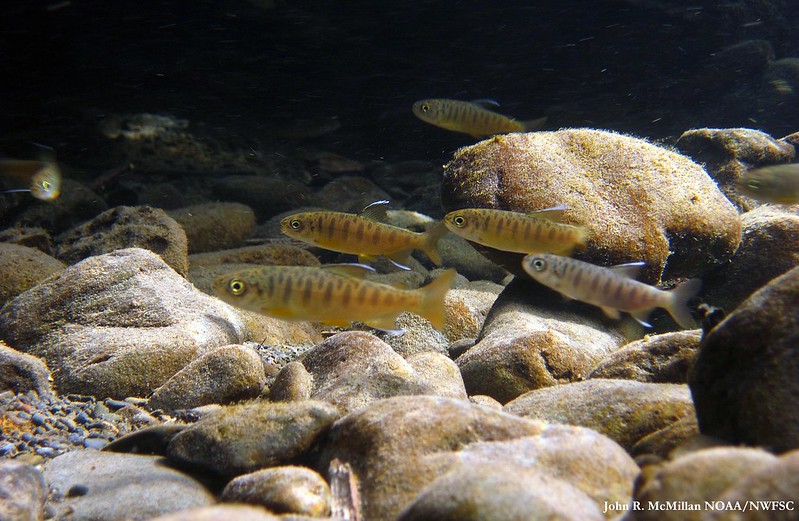
New Private Forest HCP To Benefit Clackamas, Molalla Salmon, Steelhead
A recently approved habitat conservation plan for private timberlands in the Clackamas and Molalla River basins east of Portland is being called a first of its kind for Oregon and is expected to result in improved Chinook, coho and steelhead habitat.

The National Marine Fisheries Service says the 50-year plan covers roughly 30,000 acres owned by Port Blakely and will allow the company to continue logging its lands “while also improving habitat the threatened species need to recover.”
The plan includes decommissioning logging roads, removing fish passage barriers and increasing the width of buffers along streams, as well as placing woody debris in waterways to act as refugia for young salmonids, plus grants to local councils to perform similar activities nearby, according to NMFS.
It’s a first for private timberlands in the state.
“It represents a tremendous dedication of resources on the part of the company,” said agency fisheries biologist Annie Birnie in a story posted earlier this week. “If you are not in it to see it through, it does not make sense. You have to be committed over the long-haul because the benefits come over time.”
In exchange, the feds are essentially granting Port Blakely an incidental take permit to harm the fish through its logging activities in the foothills near Viola, Colton, Mulino and Molalla. NMFS argues that “the company’s habitat improvements will provide greater value to the species by promoting recovery in the longer term.”
The HCP has been on the drawing board since 2016, according to NMFS, and included examination of the timberlands and what would benefit the fish the most while making sense for the company.
“We are big believers in a collaborative approach to habitat protection, and NOAA’s partnership in this process was critical,” said Claudine Reynolds, Port Blakely director of wildlife and environmental policy, in the NMFS story. “This plan will allow us to continue to manage our forests to provide timber, while improving the outlook for the species, and offering a beautiful natural resource for our community.”
The company provides walk-in access to much of its lands, except during red flag or excessive heat conditions.
